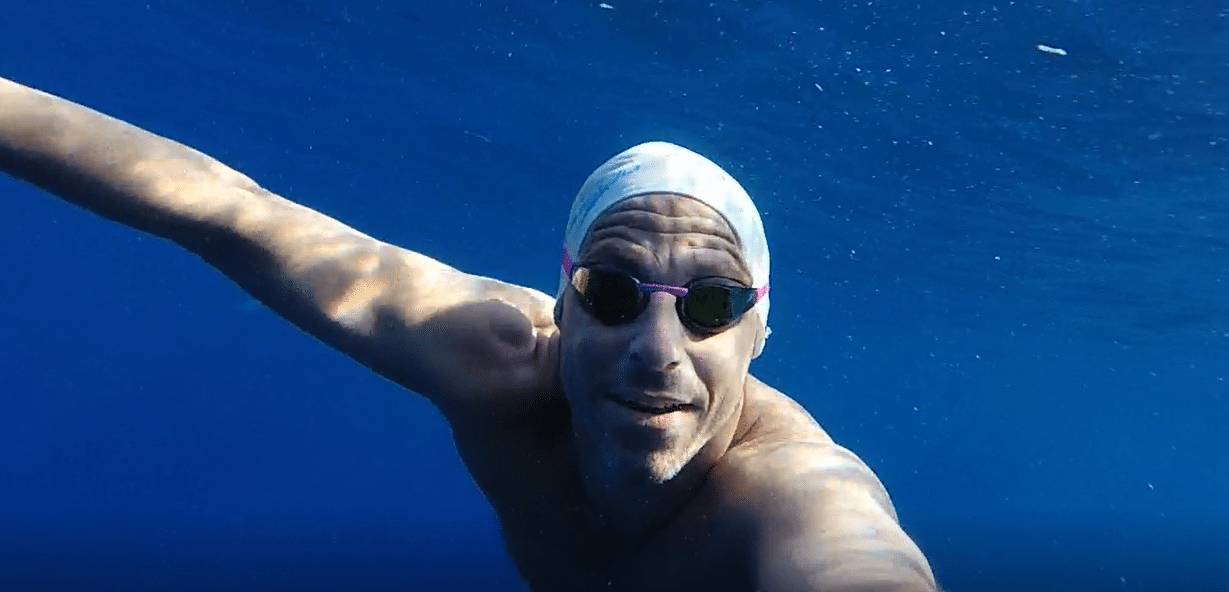“Hypoxia” – A pathological state of lack of oxygen in the cells due to a block of the oxygen supply to the body.
Some of you may already say: “This is not for me! Why cause oxygen deprivation on purpose?”
Andy Moraz, an Olympic swimmer, said in an interview with me, that one of the toughest and most stressful drills for her is running, jumping in the water and then swimming 50m without breathing.
Oxygen deprivation in power drills can cause fainting, loss of consciousness or even death, but despite the stress Andy knows that to compete in the highest levels for 50m she should know how to hold her breath and still generate power and speed. One wrong breath can cost her the swim.
After the Olympic Games people always come to me and tell me: “Ori, from now on I’m going to breathe every 2 strokes, like the Olympic swimmers.”
The reason they swim every 2 strokes is to get more oxygen with every breath.
Why do we need to get more oxygen in a shorter amount of time to the bloodstream and from there to the muscles? Lack of oxygen, beyond the hardship, will eventually make us swim slower.
It’s important to note that Michael Phelps combines in his swimming practices hypoxia drills almost every time, and many times he swims with breaths every three, five and even seven strokes, and even when he breaths every two strokes he changes sides to master the move symmetrically.
So why do we, the ordinary people, have to do such drills?
Oxygen makes us more concentrated. It allows us to be accurate in our performances for longer periods of time. It allows us to be sharper in life and also swim faster.
A few years back there was a research that aimed to check how it is that people from Kenya and Ethiopia Run faster for long distances of 5-42 km. They studied the oxygen ability, altitudes, training plan and the built of the runners’ legs and came to the conclusion that statistically the diameter of the biceps in the smallest, and so when they lift their leg the muscle oxidizes more slowly, because it lifts a lower weight.
Despite the muscle’s weight, if we could get in more oxygen faster we wouldn’t see a difference.
Our goal is through using the oxygen to get the muscle to tire more slowly or, in other words, maintain our pace for a longer time.
Changing the way you breathe and succeeding to move from breathing every 2 strokes to breathing every 3 strokes, or perform a Freestyle flip turn takes between a month and a half and three months. It’s hard to grasp that you can cause a 20% increase in oxygen intake in such a short time.
**10 steps to learn the freestyle turn in swim WEST technique>>
An example of hypoxia drill:
Start by swimming 6*200 at a steady pace: 200 breathing every 5 strokes, 200 breathing every 3 strokes, 200 breathing every 5 strokes, 200 breathing every 3 strokes, 200 breathing every 5 strokes, 200 breathing every 3 strokes.
After each 200m rest for 45 seconds, keeping the exit time the same, no matter how fast you swam that 200m. That is, if you swam slower, this will come at the expense of your rest time.
Swim easily for 50m to release and repeat the drill, only this time the second 200m will be at a faster pace, the fourth even faster and the sixth the fastest.
This drill will make you feel good, because it’s like running with a mask on your face which inhibits your breathing. When you take the mask off you suddenly feel you have tons of air, and even if you don’t really, psychologically you will feel like it and run faster.
Many swimmers say that after a hypoxia drill they “fly” through 200m with breathing every 3 strokes. They have plenty of air and experience no difficulty breathing.
Another interesting element is enlargement of the lung volume and capacity. Swimmers can enlarge their lung volume in up to 20% for a number of reasons: flexibility, shoulder width and swimming itself.
Learn to swim WEST & improve your breathing dramaticallyNotwithstanding, swimmers can also enlarge their lung capacity in up to 60%. That means that if a heavy smoker uses 60% of his lungs, a swimmer can use 160%.
Here’s another excellent drill for foot cramps which object is to get the body and the brain used to getting more oxygen in with every inhale and send it straight to the legs. This is an incredible drill for all swimmers and especially triathletes, swimmers who don’t move their legs much and people with an especially high muscle mass.
Swim 5*100: Start with your hands in an arrow, using only your legs, without breathing, for as long as you can, and then continue the rest of the 100m with hands, long strokes and breathing every 5 strokes.
Between every 100m rest for 20 seconds.
After 3*100 the mind understands that it has to supply oxygen fast to the leg muscles and so the swimmer utilizes more oxygen, the muscle cramps less and floats better.
**In the end of such a drill you must stretch the legs for 2 minutes to maintain the muscle length.
There are, of course, hundreds of amazing drills. Try this in swimming and you’ll be amazed how this will help you run a marathon and be more focused for longer periods of time in life in general.
If those drills are hard for you we recommend you elongate your muscles through a WEST training plan, and the you’ll also learn how to swim according to your body’s built, Keep your neck safe and alter the structure of the muscle to allow it to utilize more oxygen.
Start today and get 50% off on your swim WEST freestyle course


